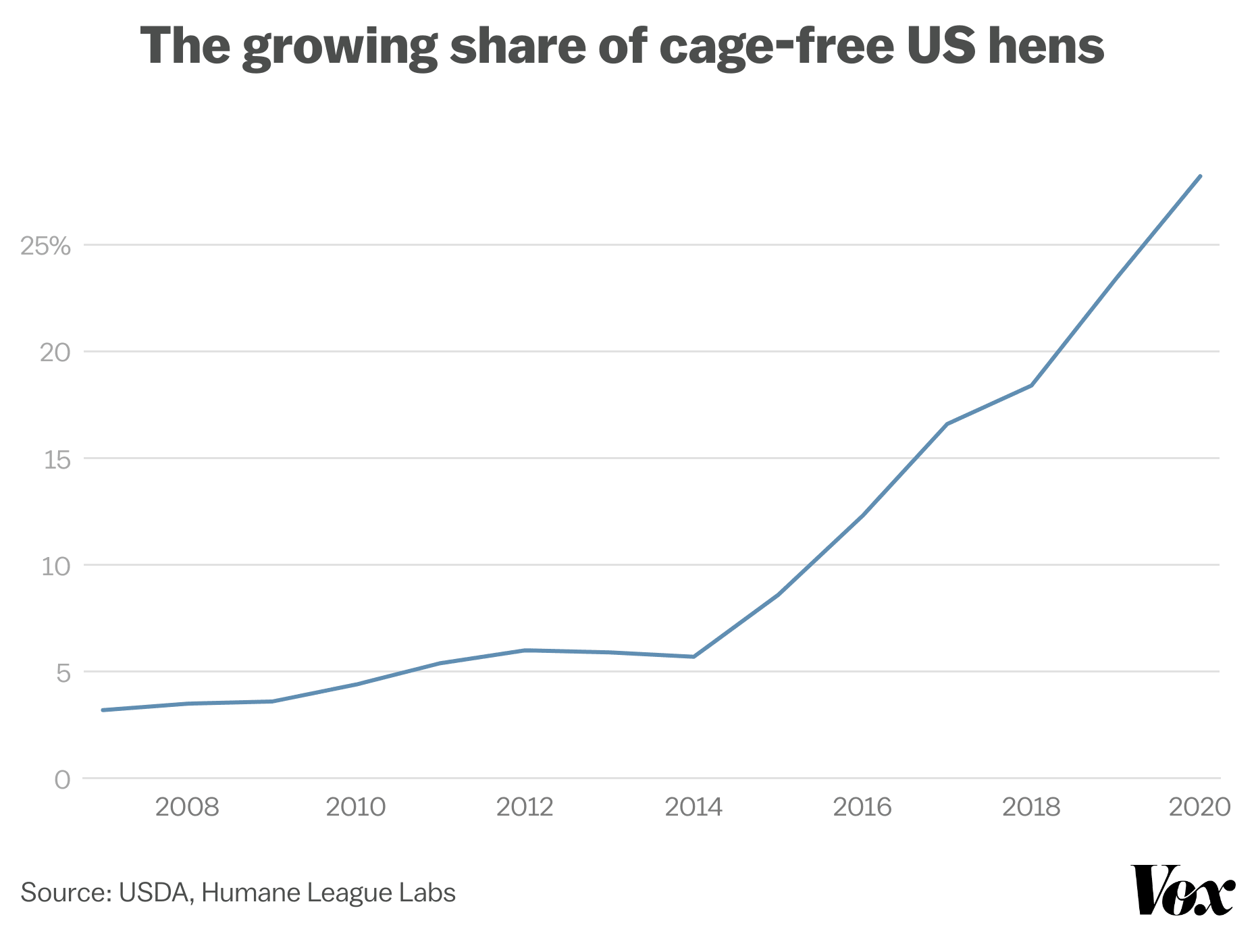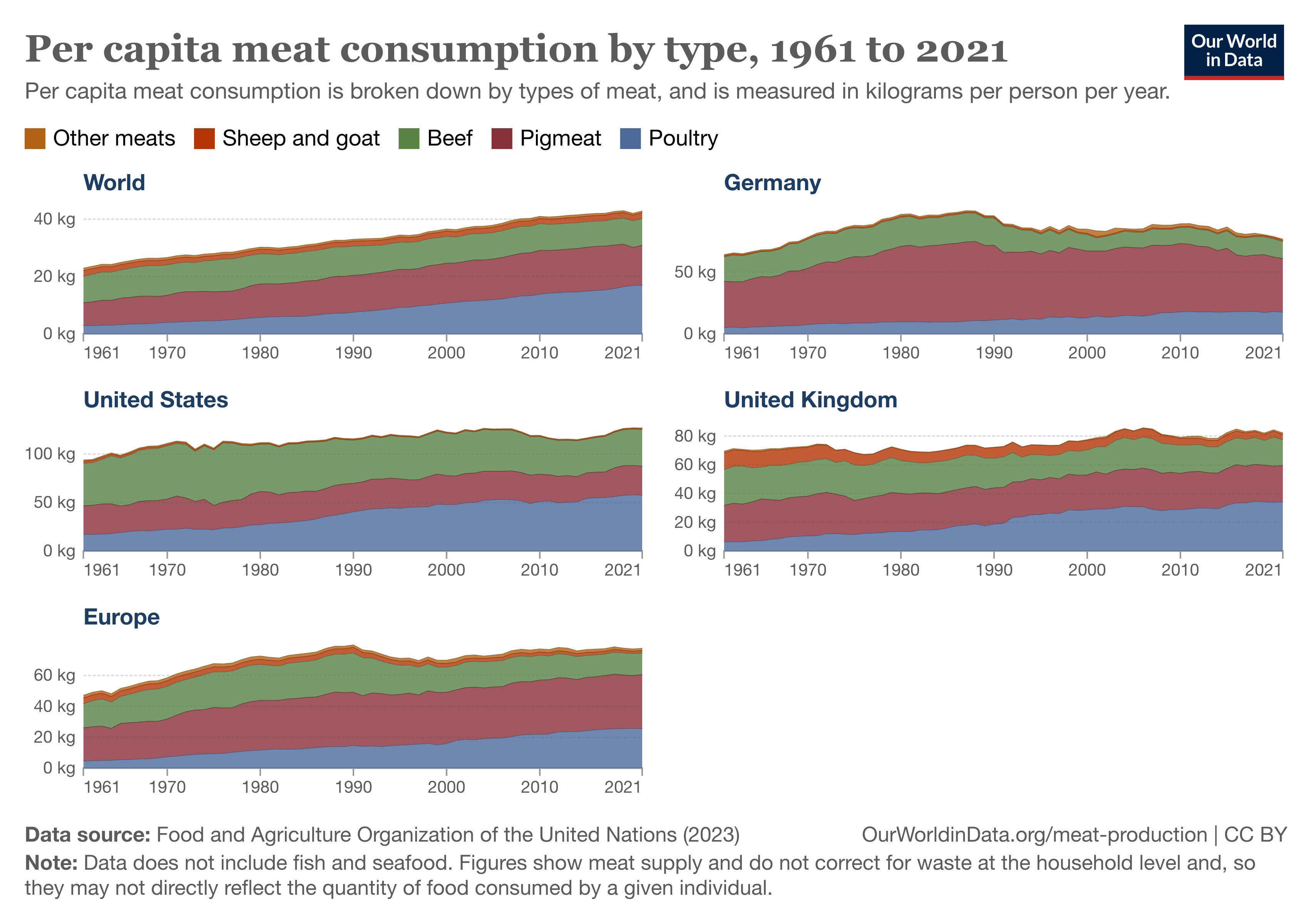JamesÖz
Bio
Currently grantmaking in animal advocacy, at Mobius. I was previously doing social movement and protest-related research at Social Change Lab, an EA-aligned research organisation I've founded.
Previously, I completed the 2021 Charity Entrepreneurship Incubation Program. Before that, I was the Director & Strategy lead at Animal Rebellion + in the Strategy team at Extinction Rebellion UK, working on movement building for animal advocacy and climate change.
My blog (often EA related content)
Feel free to reach out on james.ozden [at] hotmail.com or see a bit more about me here
Posts 32
Comments261
I work as a grantmaker for a larger donor but as part of my role, I offer pro-bono advising to people giving $50k+ to animal welfare. If anyone is interested in this, feel free to message me via the Forum and happy to help!
(I’ve also advised donors giving $2-10M so feel free to reach out if you want to give at higher amounts too.)
Thanks for the kind words Toby! Yes, sadly the trends are not particularly positive at all.
There actually is some useful OWID data on hens and sadly it's not particularly positive on a global level (they estimate at least 3 billion in cages but I've heard this is likely an under-estimate and it's closer to 4-5 billion).

That said, there is certainly progress in the US and Western Europe, covered in this Vox article. The US cage-free percentage is around 42% now and I believe all cage-free progress across US and Europe equates to around 300 million hens out of cages relative to a couple of decades ago - a huge victory for animals and the animal advocacy movement as you note.

In terms of the Kuznets curve, that's definitely interesting and I agree it's worth considering if there is some element of progress in economically developed countries which will hopefully be matched as other countries develop. I think this is fairly clear for things like getting rid of some of the worst farming practices e.g. battery cages or gestation crates for pigs which has seen considerable success across the US and Europe. However, it's less clear on the meat consumption side of things as only Germany has seen a notable decline in meat consumption in the past 30 or 40 years (although we have seen a levelling off in the US and Europe which is some positive sign). That said, there is more chicken being eaten in most of these countries which likely means more animals farmed and killed overall. As such, I'm not convinced we have signs of a Kuznets curve for total animal suffering as it's quite likely the improvements we've made in outlawing some of the worst practices like battery cages are offset by increased chicken consumption.

Not necessarily as severe as hitting a wall for the next few decades but in brief:
- I don't think agriculture is one industry that will be transformed that rapidly (e.g. on the order of months or years) due to AI, mainly because:
- There are lots of traditions and cultural things around food so I don't imagine people will want to dramatically change how they eat over the next decade or two
- Agriculture involves human feedback loops (e.g. consumers trying products and giving feedback) which makes it hard to accelerate exponentially with AI progress (unlike predicting protein folding via AI or writing code)
- Any advancements in AI are likely to benefit the animal agriculture industry just as much, if not more, as animal advocates
- Given the animal ag industry is orders of magnitude richer than us, I assume they will have more capacity to try to integrate AI into their work e.g. intensifying factory farming (see this blog for more info). This further locks in the trends mentioned above
- We will use AI for alt protein innovation but again, this has long feedback loops due to needing human taste tests and product development, so I just don't think we'll get dramatically better products that quickly
Can you unpack your thinking on the complentarities of AP chicken and beef a bit more? My hunch is that the cost differential between beef and chicken is relatively pretty big e.g. the cheapest chicken costs around £2.5/kg and the cheapest mince is £5/kg (see photo and data below from Hannah Ritchie) so the former is just extremely hard to compete with. As such, I think it's very plausible/likely that we'll get price parity alternative proteins for the cheapest beef but maybe not with the cheapest chicken, in contrast to your comment.
Additionally, there are effects like:
- Companies are much more likely to try to compete with beef as price parity is more plausible, so there's more innovation, talent and competition there, which makes the likelihood of reaching price parity higher.
- Innovations that help beef won't necessarily spillover into improving chicken products (e.g. mince is much easier to make than whole-cut chicken, there is no need for the iron/heme taste in chicken, etc.)
So overall I'm not convinced that the carbon tax is net good for animals as the complementarities between chicken and beef don't seem that great. Curious to hear more though on your thoughts on this.

This isn’t true for any of the other sub-focus areas that will be exited though, which I thought was strange. Given that nothing other than digital minds work was listed, how would any potential donors or people who know potential donors know about OP exiting things like invertebrates or wild animal welfare?
(I’m basing those sub-focus areas on the comments in this thread because of exactly this problem - I’m unclear if there’s more being exited or if those two are definitely part of it)

There are also reasons why this might be the most animal-friendly US administration ever:
Basically, this is a great example of the importance of working in a bipartisan way. If the animal movement had been more focused on building political allies on both sides of the aisle, this could actually be some of the best opportunity to pass anti-factory farming legislation.